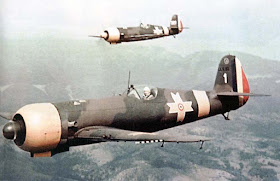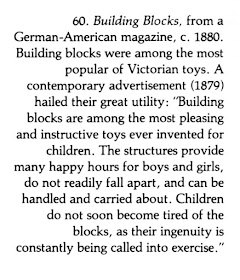Poster by Ernst Ruprecht
Thursday, December 31, 2015
1910 Sears Autocycle
 |
| http://www3.familyoldphotos.com/photo/pennsylvania/18381/edd-hull |
He doesn't look all that happy.
The Sears Autocycle was actually built by the Aurora Automatic Machinery Company, which made "Thor" motorcycles. Sears just slapped their badge on the tank and apparently added a bit of sheet metal. Just the ticket for impressing the straw hat-wearing, sticking-toting rubes in the boonies!
 |
| http://m.blog.daum.net/zero322/5867906 |
 |
| 1911 |
One of my vices is vises: broom press, 1878
I photographed this broom press at a little hole-in-the-wall museum in the States a few years ago. They had it labelled as a "broom vise." It was designed to hold brooms in place so you could sew the bristles together. It had a patent date on it:
Wednesday, December 30, 2015
Planes I've never seen before. The IAR 80
 |
| Goodhal garage |
Dowel and rod turning machine
GE aircraft rev counter
I found this at a yard sale years ago. If memory serves, I gave it to Mister G for some rocket tractor or flying motorcycle he was planning.
Tuesday, December 29, 2015
Coastal tanker Rockland Gulf
The 56' Rockland Gulf, picture taken in December of 2013, laid up for the winter at Rockland Maine. She was built in 1933 at Brooklyn NY to deliver fuel in the Penobscot Bay area and still serves, carrying lobster bait and fuel.
In November of this year she slipped her moorings and went aground near the Breakwater. There is no news of the refloat so all must have gone well.

Carbide masonry drills
I was recently reorganizing my masonry drills and discovered a number of both storied and (to me) unfamiliar names. Below, what looks like "Bardu." I can't find any information on this maker.
Below, "Buck" made in Sheffield. Again, no information on the web.
A 13-mm "David":
Dormer:
Founded in 1913 as The Sheffield Twist Drill & Steel Company by H.A. Dormer and L. Robertson, the famous Dormer Dovecote trademark was registered in 1917, based on a Dutch agent's suggestion of a windmill with a Dormer window.
The company celebrated its centenary several years ago. According to The Manufacturer:
"Dormer’s history has been interspersed with industry innovations. Back in 1950, for example, the company was the first drill manufacturer in Europe to introduce the Steam Temper treatment, with its characteristic blue finish, to its products. This treatment proved highly successful and received widespread acclaim from the engineering industry.
As long as 46 years ago, Dormer was showing its initiative for embracing emerging technologies when it acquired a new computer, leased from IBM, at a cost of £135,000. It needed its own air conditioned room and performed 30,000 calculations per second. A modern 2 GHz processor can perform 2,000,000,000 processes per second.
And in 1984, the company was one of the first in the industry to make it possible for customers to electronically order products on line at a time when the internet was virtually unknown outside of the academic world."
Dormer was bought by Sandvik in 1992. In 2007, the Swedish parent closed down the Worksop factory in England, putting 190 employees out of work. (That factory had been opened in 1957, the realisation of Alex Dormer's vision to build a factory in rural surroundings.) In 2013, plans were afoot to convert the abandoned factory to residential lots and a nursing care facility.
 |
| 1921 |
General Electric, under their "Carboloy" brand:
Tungsten carbide cutting technology was simultaneously developed in the 1920's by the German Krupp firm (which called it widia (from wie diamant, "like diamond") and General Electric, which called it "carboloy." In 1928, the Carboloy Department of GE was formed. It was acquired by Sandvik in 1987.
 |
| 1944 |
Joran, Denmark:
Joran was founded in Thisted, Denmark in 1944. In 1994, it was acquired by American Tool Companies, Incorporated, the company founded in 1985 by the Petersen family behind Peterson Manufacturing and its famous Vice-Grip pliers. In 1993, American Tools acquired Irwin Tools. In 2002, Newell-Rubbermaid acquired American Tools, and renamed it Irwin Industrial Tools a year later. Ironically, or perhaps coincidentally, the founder of Petersen Tools was himself a Dane.
Rawlplug, England. Not carbide, but a masonry bit nonetheless:
Rawlplug was named after a fibre wall plug patented by John Joseph Rawlings in 1911. The firm is now owned by a Polish company.
 |
| https://en.wikipedia.org/wiki/Rawlplug_Ltd. |
Rex. No idea where it was made.
Roxite, England.
It appears that this was a trademark used by Marsh Brothers & Co. of Sheffield which, founded in 1654, seems to have foundered in the 1960's.
 |
| 1954: http://www.gracesguide.co.uk/Marsh_Brothers_and_Co |
Westa, Germany:
Westa Werkzehau GmbH, Germany was acquired by Vermont American in 1985.
Wickaloy, Canada.
Wickaloy was a brand of A.C. Wickman Limited, a British firm which had a Canadian subsidiary in Toronto.
 |
| 1943: http://www.gracesguide.co.uk/A._C._Wickman |
The company was the oldest manufacturer of carbide in Canada, and was acquired in 1979 by the giant Kennametal corporation of Latrobe, Pennsylvania, the largest manufacturer of metal-cutting tools in North America, and the second-largest worldwide. (Interestingly, Kennametal bought the Canadian company from John Brown & Company of London, England, presumably the same Scottish ship-building firm that made such famous vessels as the Lusitania, the H.M.S. Hood and the Queen Elizabeth 2, and that is featured in the 1961 Academy Award winning documentary, Seawards the Great Ships.) Not surprisingly, after the purchase, Kennametal slashed workers' numbers and wages.
Monday, December 28, 2015
Building Blocks c. 1880

From Anita Schorsch. Images of Childhood. An Illustrated Social History. Main Street Press Book/Mayflower Books, 1979.
When my kids were growing up, we had a big box of wooden blocks for them to play with. I'd occasionally add unusually-shaped off-cuts from my shop to complement them. Of all of the toys they had over the years, the blocks had consistently the best play value.
When my kids were growing up, we had a big box of wooden blocks for them to play with. I'd occasionally add unusually-shaped off-cuts from my shop to complement them. Of all of the toys they had over the years, the blocks had consistently the best play value.
Five masters in one photounit
Sunday, December 27, 2015
Light tank engine from Krupp
Daily Double Cigars
Named, not from the Jeopardy TV game, but from horse and dog racing.
The years from 1880 to 1930 were considered to be the golden age of the cigar in North America. For more on cigar marketing, see the Canadian Museum of History's online exhibit, Selling Smoke: How Canadian Cigar Boxes Pitched their Wares 1883-1935. That exhibit explains:
"In this smoker's world, said each label, their cigar stood out: it was an agricultural marvel, a craftsman's masterpiece, a technological miracle, an international prize winner, a luxury worthy of the rich and powerful, a gift of the gods.""Craftsman's masterpiece?" "Technological miracle?" The reality was much different:
 |
| Alden March. The History and Conquest of the Philippines and Our Other Island Possessions. World Bible House, 1901. |
 |
| Philippe Dasney. Vingt millions d'immigrants. New York 1880-1914 en photos. Paris: Elsevier Sequoia, 1977. |
Saturday, December 26, 2015
Stanley No 743 two speed hand drill





































